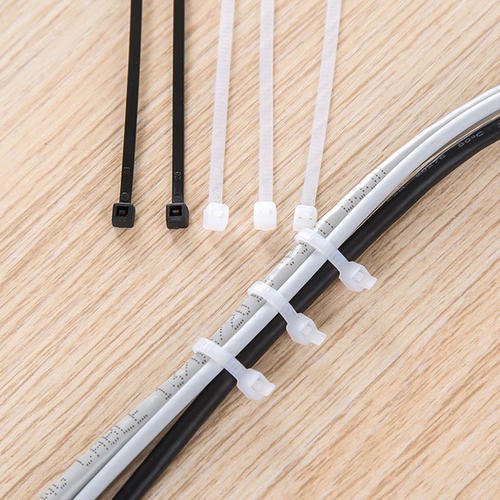Nylon tie binding of wire harness
-
 @
Mark Ji
@
Mark Ji
- Last updated
Table of Contents
Introduction
Nylon tie binding of wire harness is a method of securing and organizing electrical wires and cables in various applications, such as vehicles, machinery, equipment, data centers, etc. Nylon ties are made of high-quality nylon 6/6 material, which is resistant to heat, abrasion, chemicals, and UV rays. Nylon ties have a curved tip and a self-locking head, which allow for easy threading and installation, without slipping or loosening. Nylon ties can also be cut or removed easily when needed.

The tensile strength of nylon ties is the maximum amount of force or load that a nylon tie can withstand before breaking or failing. It is typically measured in pounds (lbs) or kilograms (kg) and varies depending on the type, size, and material of the nylon tie. For example, a standard nylon cable tie measuring 80mm x 2.5mm has a tensile strength of 8kg, whereas a stainless-steel cable tie with a width of 7.9mm has a minimum tensile strength of 160kg. Tensile strength is an important factor to consider when selecting nylon ties for a specific application, as it ensures that they can securely fasten and support the wires or cables without failure.
Advantages of Nylon tie binding
• Nylon ties are more durable and reliable than electrical tape, which can peel off, lose adhesion, or become brittle over time.
• Nylon ties are more secure and neat than velcro straps, which can be bulky, messy, or snag on other objects.
• Nylon ties are more flexible and versatile than nylon harnesses, which can be rigid, bulky, or difficult to adjust.
• Nylon ties are more cost-effective and widely available than other methods, which can be expensive, scarce, or specialized.
Disadvantages or limitations of Nylon tie binding
• Nylon ties can cause damage or stress to the wires or cables if they are applied too tightly, which can affect the performance or safety of the electrical system.
• Nylon ties can create waste or pollution if they are not disposed of properly, as they are not biodegradable or recyclable.
• Nylon ties can be affected by extreme temperatures, humidity, or corrosion, which can reduce their strength or lifespan.
Nylon tie binding of wire harness is a common and effective way of managing wire and cable bundles in various electrical applications. However, it is important to use nylon ties correctly and responsibly, following the best practices and guidelines for each specific situation.

